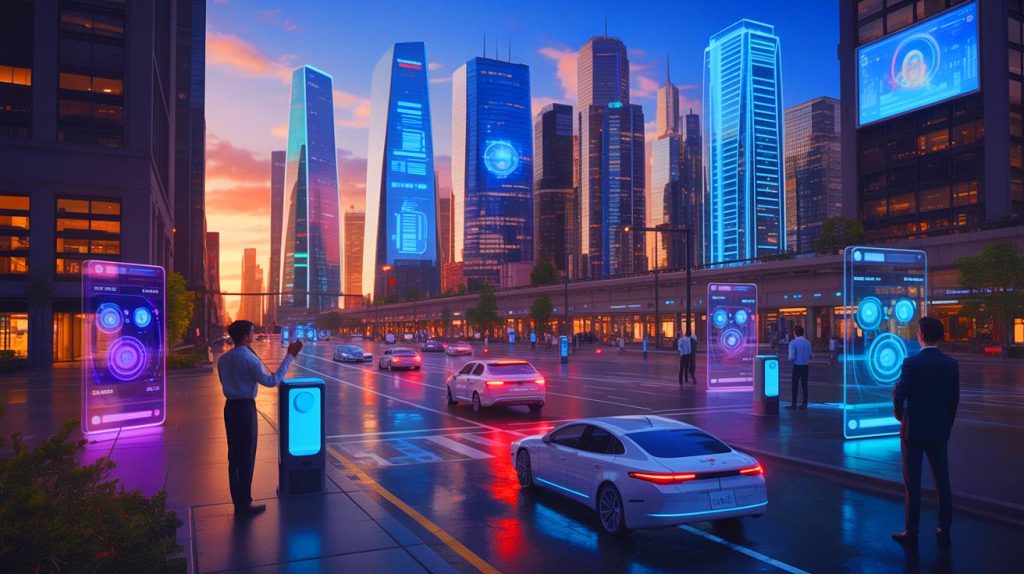The “Miracles” Needed: Are We Close to Human-Level AI? A Deep Dive
Artificial Intelligence (AI) has captured the imagination of scientists, futurists, and the general public alike. For decades, the tantalizing prospect of creating machines that can think, learn, and reason like humans has fueled both groundbreaking research and dystopian anxieties. But where are we really in the quest for human-level AI, often referred to as Artificial General Intelligence (AGI)?
Recently, Nathan Myhrvold, a prominent figure from Microsoft’s early days and the CEO of Intellectual Ventures, offered his perspective on this very question. He suggested that achieving human-level AI is just a few “miracles” away. This statement, while seemingly optimistic, warrants a closer examination of the current state of AI, the hurdles that remain, and the ethical considerations that must guide its future development.
The Current Landscape: AI’s Impressive, Yet Limited, Capabilities
AI Powerhouses and Rapid Advancements:
The past few years have witnessed remarkable progress in AI, driven largely by the collaborative efforts of industry giants like Microsoft and OpenAI. These companies have invested heavily in research and development, resulting in AI systems capable of performing tasks previously deemed exclusively human. We see AI excelling in areas such as:
- Natural Language Processing (NLP): AI can now generate human-quality text, translate languages, and even engage in seemingly intelligent conversations.
- Image Recognition: AI systems can accurately identify objects and patterns in images, surpassing human capabilities in certain specialized tasks.
- Game Playing: AI has conquered complex games like chess, Go, and even competitive video games, demonstrating impressive strategic thinking and learning abilities.
- Data Analysis: AI can sift through vast amounts of data to identify trends, patterns, and insights that would be impossible for humans to uncover manually.
However, despite these impressive feats, current AI systems still fall short of true human-level intelligence. They excel at specific tasks but lack the general-purpose reasoning, adaptability, and common sense that characterize human cognition.
The “Miracle” Gaps: Conceptual Understanding and Abstract Reasoning:
According to Myhrvold, the key missing ingredients for achieving AGI are the ability to create new abstract concepts and reason about them effectively. This is where the “miracles” come in. Current AI models, even the most sophisticated ones, primarily rely on pattern recognition and statistical analysis of vast datasets. They can learn to mimic human behavior and generate impressive outputs, but they lack genuine understanding and the capacity for original thought.
To illustrate this point, consider a simple scenario:
- AI: A program trained on a massive dataset of books can write a poem that sounds beautiful and evocative.
- Human: A poet can write a poem that explores complex emotions, draws upon personal experiences, and communicates profound insights about the human condition.
While the AI-generated poem might be aesthetically pleasing, it likely lacks the depth, originality, and emotional resonance of the human-created poem. This difference highlights the gap between AI’s ability to mimic and human’s capacity for genuine understanding and creative expression.
Application Programming: Harnessing AI’s Potential for Good
Myhrvold also emphasizes the crucial role of application programming in unlocking AI’s true potential. It’s not enough to simply develop sophisticated AI algorithms; we must also find innovative ways to apply these algorithms to solve real-world problems and enhance human capabilities.
While AI can generate creative outputs, the real challenge lies in developing applications that can transform industries, improve healthcare, address climate change, and promote social good. This requires a multidisciplinary approach that combines AI expertise with domain knowledge, design thinking, and a deep understanding of human needs.
Lessons from History: Myhrvold’s Track Record and the Future of AI
Myhrvold’s insights on AI are particularly valuable given his history of accurately predicting technological trends. He foresaw the convergence of computers with consumer electronics and the rise of online video content long before these trends became mainstream. His foresight extends to the future of AI, where he anticipates increased energy demands driven by data-intensive technologies.
The Energy Imperative: Fueling the AI Revolution:
The growth of AI and cloud computing is creating a significant strain on global energy resources. Training large AI models and running data centers requires vast amounts of power, raising concerns about sustainability and environmental impact. Myhrvold highlights the need for innovative energy solutions, such as next-generation nuclear power, to meet these growing demands. He suggests that companies like TerraPower, where he serves as vice chairman, will play a vital role in developing clean and sustainable energy sources to power the AI revolution.
Navigating the Ethical Minefield: Ensuring Responsible AI Development
The rapid advancement of AI technologies raises profound ethical questions that demand careful consideration. Myhrvold cautions against succumbing to fear-mongering narratives that portray AI as a potential overlord, comparing such fears to fictional villains. While these narratives are entertaining, they distract from the real ethical issues at hand.
Key Ethical Considerations:
- Bias and Fairness: AI models can inherit and amplify biases present in the data they are trained on, leading to discriminatory outcomes.
- Privacy and Security: AI systems often collect and process vast amounts of personal data, raising concerns about privacy breaches and potential misuse.
- Job Displacement: The automation capabilities of AI could lead to significant job displacement in various industries, requiring proactive measures to mitigate the social and economic consequences.
- Autonomous Weapons: The development of autonomous weapons systems raises serious ethical concerns about accountability, control, and the potential for unintended consequences.
Addressing these ethical challenges requires a collaborative effort involving researchers, policymakers, industry leaders, and the public. We need to develop ethical guidelines, regulatory frameworks, and technical solutions to ensure that AI is developed and deployed in a responsible and beneficial manner.
Beyond Science Fiction: Focusing on Real Ethical Issues:
Instead of focusing on sensationalized scenarios of AI rebellion, we should focus on addressing the real ethical challenges that AI presents today. This includes ensuring that AI systems are fair, transparent, and accountable, protecting privacy and security, mitigating job displacement, and preventing the development of harmful AI applications.
Conclusion: A Few “Miracles” and a Lot of Hard Work Ahead
Nathan Myhrvold’s assessment that human-level AI is just a few “miracles” away is both optimistic and sobering. While AI has made remarkable progress, significant hurdles remain in achieving true general intelligence. Overcoming these hurdles will require not only technological breakthroughs but also a deep understanding of human cognition, ethical considerations, and innovative solutions to the energy challenges posed by the AI revolution.
The journey towards AGI is a complex and challenging one, but it also holds immense potential to transform our world for the better. By focusing on responsible development, ethical considerations, and practical applications, we can harness the power of AI to address some of humanity’s greatest challenges and create a more prosperous and equitable future.
The question is not if we can achieve human-level AI, but how we will shape its future to ensure it aligns with our values and serves the best interests of humanity. The answer lies not in waiting for miracles, but in actively working towards a future where AI empowers us all.





